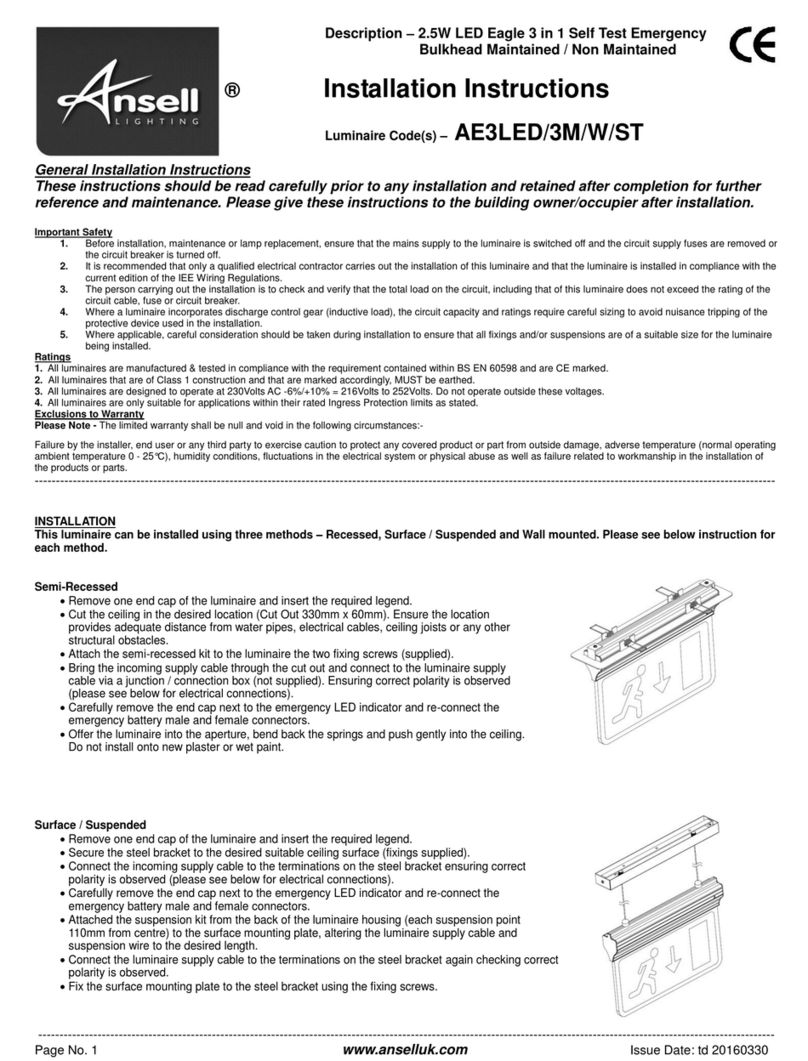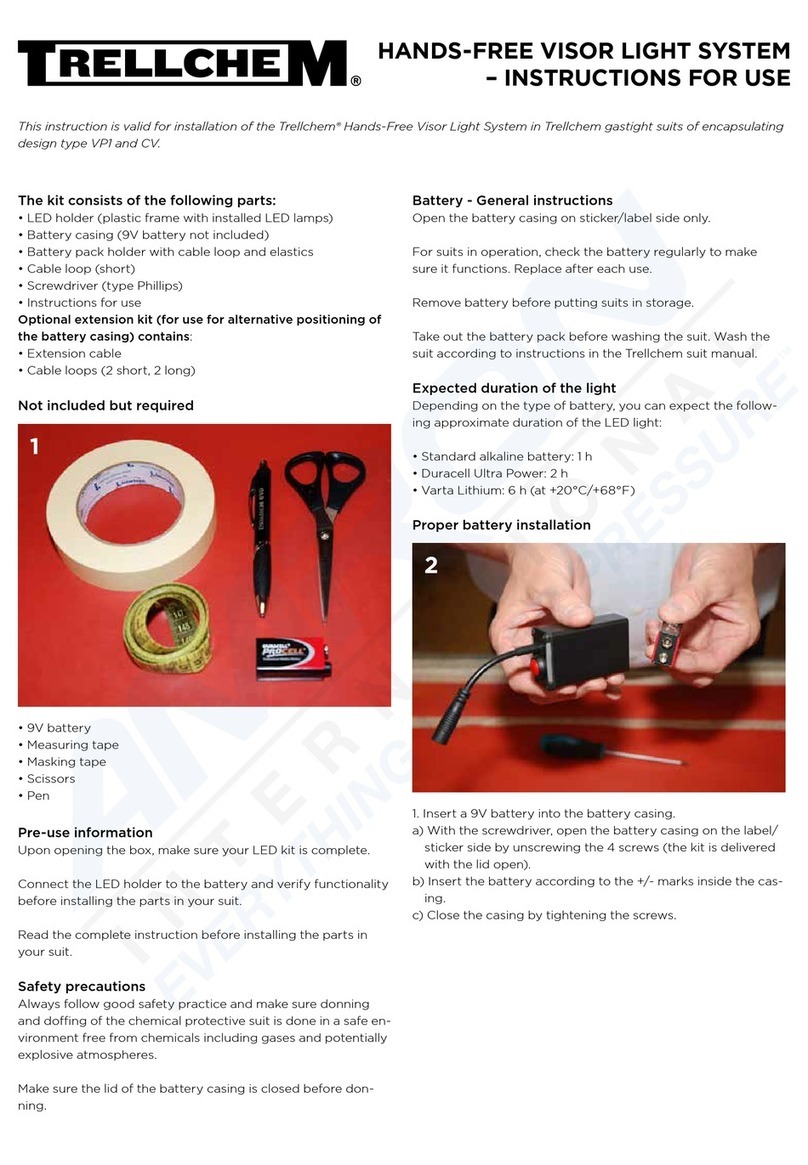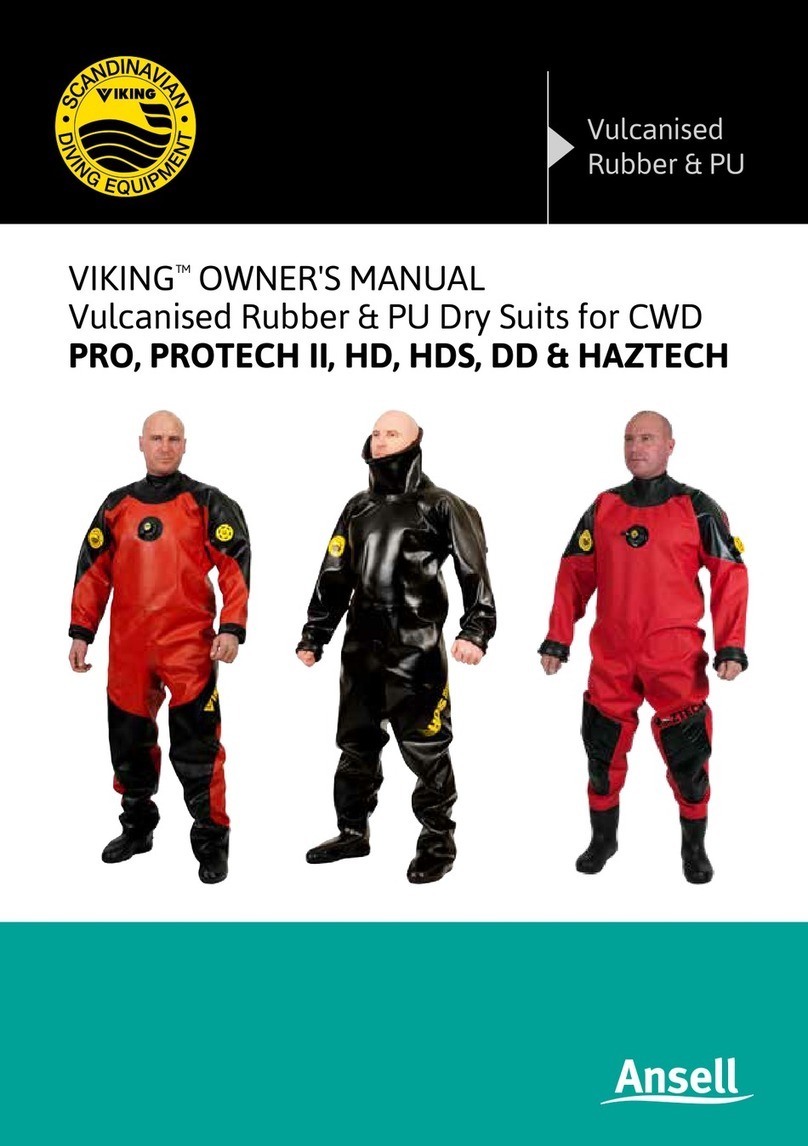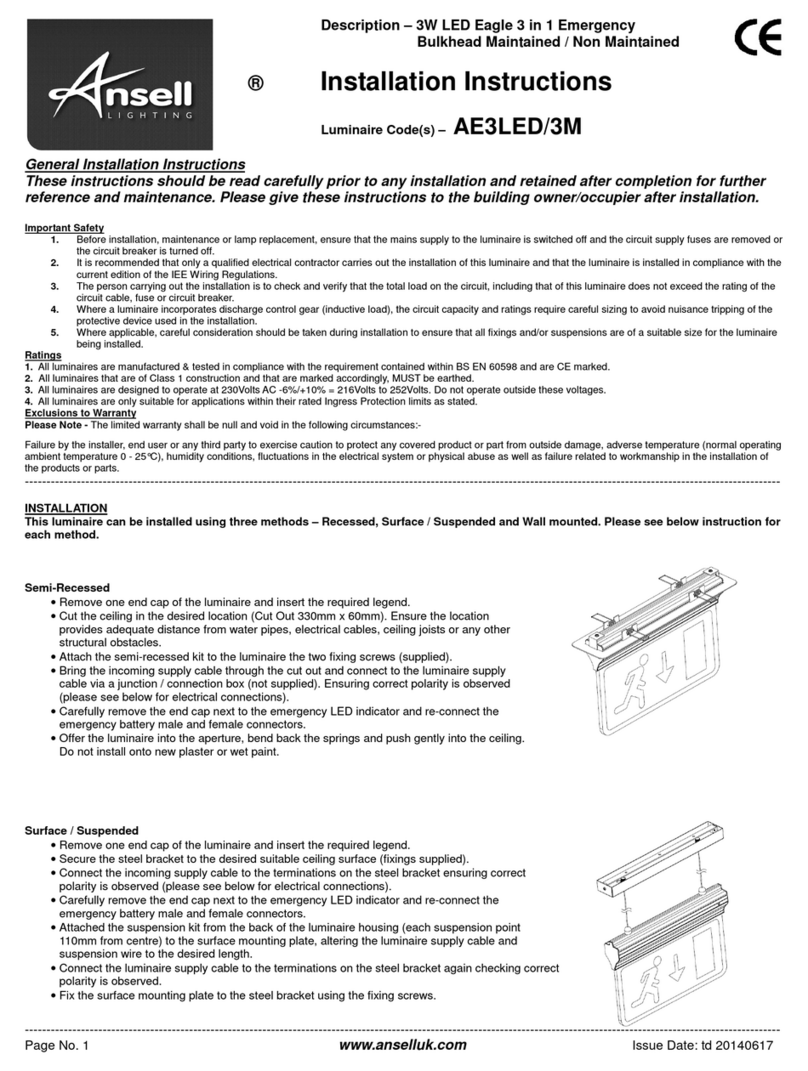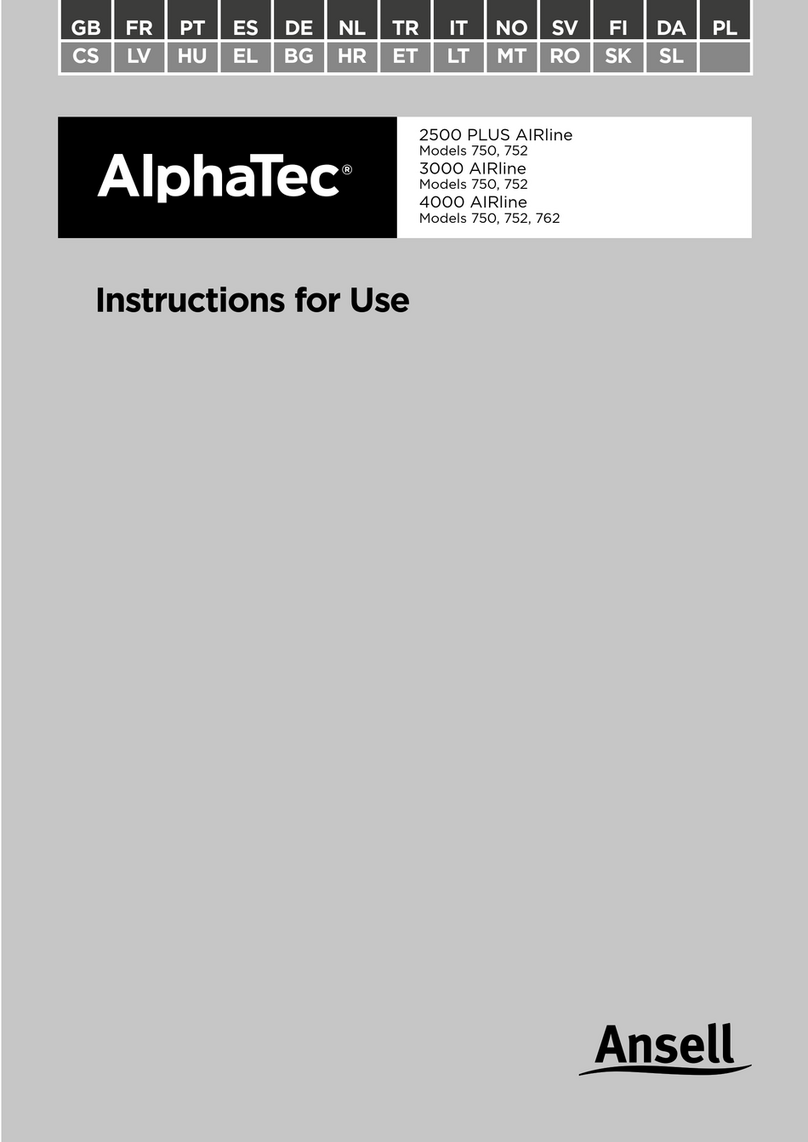
CONTENTS
1. Safety considerations.............................................................................. 5
1.1 Denitions of icons............................................................................................... 5
2. Description of suit..................................................................................... 6
3. Approvals ....................................................................................................... 7
3.1 NFPA.............................................................................................................................. 7
3.1.1 Approved accessories........................................................................................................ 7
3.2 European EC Type approval........................................................................... 7
4. Proper use...................................................................................................... 8
4.1 Intended use............................................................................................................. 8
4.2 Limitations of use .................................................................................................. 8
4.3 Temperature of use.............................................................................................. 8
5. Pre-use ............................................................................................................. 9
5.1 Donning....................................................................................................................... 9
6. In use...............................................................................................................10
6.1 Removal and reinsertion of hand from glove....................................10
6.2 Regulating the suit ventilation....................................................................10
7. After use........................................................................................................11
7.1 Initial decontamination...................................................................................11
7.2 Taking off the suit................................................................................................11
7.3 Final decontamination.....................................................................................11
8. Storage...........................................................................................................12
8.1 Storage conditions..............................................................................................12
8.2 Storage methods..................................................................................................12
8.3 Shelf life.....................................................................................................................12
9. Maintenance ..............................................................................................13
9.1 Maintenance schedule.....................................................................................13
9.2 Visual inspection of suit ..................................................................................14
9.3 Test of gas-tightness according to ASTM F 1052.............................14






